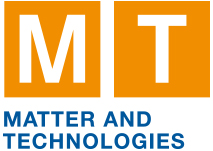Speaker
Description
Right now, high-intensity and high-energy laser systems are pumped by flash lamps or laser diodes. The flash lamps have a very large emission bandwidth (>2000 nm), which makes them inefficient and limits the repetition rate of the laser, while the narrow-bandwidth laser diodes (2-6 nm) remain very expensive (30-50$/W). These characteristics are problematic for the application for laser driven fusion, because a commercially-functioning power plant would require high repetition rates,high efficiency and low costs. In this contribution, we focus on the question if LEDs can serve as a good compromise between flash lamps and laser diodes.
In the past years, LEDs have developed tremendously as well as in cost as in performance. For example, the price for light (per kilolumen) dropped by a factor of 15 over the course of the last decade, driven by the lighting industry. In addition, the performance/efficiency increased over time. They have an acceptable bandwidth (20-60 nm), so there is significantly less unnecessary energy deposited in the amplifier material compared to flash lamps. In comparison to the laser diodes, they are a lot cheaper (20-40 ct/W). However, LEDs still exhibit low emission power densities, which has been regarded as a challenge for laser applications. A work around is the possibility to overdrive LEDs in pulsed operation mode, which has received little attention so far.
In this contribution, we report on the development of a actively Q-switched Nd:YLF laser pumped by high-power LEDs. The laser is designed to work in cavity-dumped mode and the performance is presented. The LEDs, which we employed, are the BestSMD-2835FIRC81L42I1A LEDs which emit at 810 nm, making them suiatble for side-pumping nedoymium-doped rods.
Alse the new OSRAM LED generation has been studied. We investigated the power, efficiency and power density as well as the temperature and the spectrum for different forward currents of single LEDs cooled and uncooled.
Future plans are to improve the laser head design to enable cooling and index matching. Additionally, the new OSRAM LEDs will be used to enhance the overall performance of the laser.
| Speed talk: | Normal speed talk selection |
|---|

